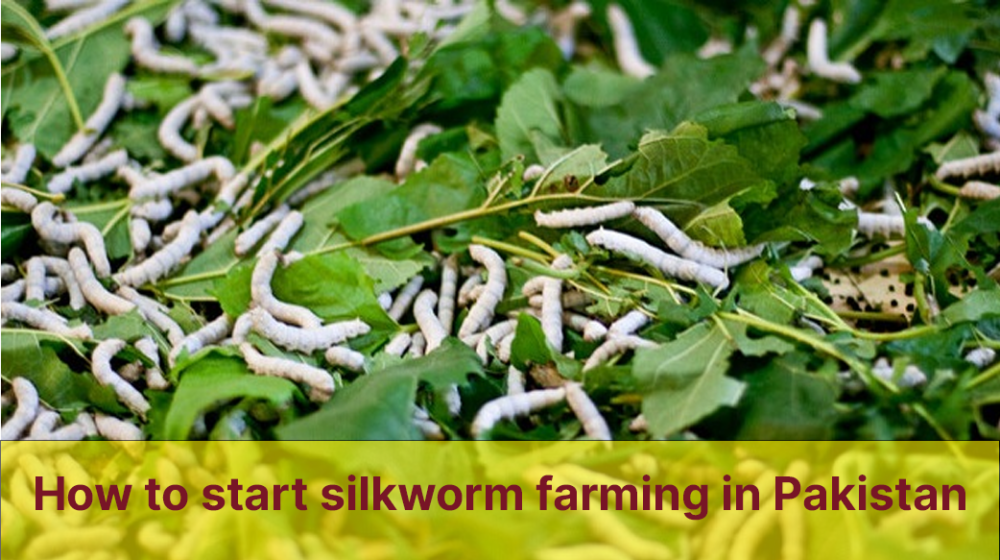Introduction to Silkworm Farming:
Silkworm farming, also known as sericulture, is a lucrative agribusiness with a long history in Pakistan. It involves the cultivation of silkworms to produce silk, which is used in various textile industries. Starting a silkworm farming venture requires careful planning and execution. In this blog post, we will explore the essential steps and tips to help you successfully begin your silkworm farming journey in Pakistan.
Requirements to Start Silkworm Farming:
- Knowledge and Research: Before diving into silkworm farming, equip yourself with comprehensive knowledge about the lifecycle of silkworms, their dietary needs, and common diseases they may encounter. Research the market demand for silk and potential buyers to ensure a steady income stream.
- Suitable Climate and Environment: Silkworms thrive in a specific climate and environmental conditions. Ensure that your chosen location has a stable temperature, proper humidity, and good ventilation. Avoid areas prone to extreme weather fluctuations or high pollution levels.
- Space and Facilities: Silkworm farming requires adequate space for rearing and cocoon production. Consider constructing a well-ventilated, clean, and spacious rearing shed. Install appropriate rearing equipment and facilities.
- Silkworm Seeds and Eggs: Acquire high-quality silkworm seeds or eggs from reputable suppliers. Healthy silkworm stock is crucial for successful rearing and cocoon production.
Step-by-Step Guide to Start Silkworm Farming:
a. Choosing the Right Location: Select a location with the right environmental conditions, such as moderate temperatures (around 25-30°C) and proper ventilation. Ensure the area is secure from predators and pests.
b. Creating the Silkworm Rearing Space: Build a rearing shed with bamboo frames and wire mesh to provide adequate space for the silkworms to grow and spin cocoons. The shed should have proper insulation to maintain the desired temperature and humidity levels.
c. Procuring Quality Silkworm Seeds or Eggs: Purchase healthy silkworm seeds or eggs from reputable suppliers. Inspect the stock carefully for any signs of disease or poor health.
d. Rearing and Feeding Silkworms: Place the silkworm eggs on special rearing trays or racks and provide a suitable diet, such as mulberry leaves. Ensure they have a continuous supply of fresh leaves until they are ready to spin their cocoons.
e. Harvesting Silkworm Cocoons: Once the silkworms have completed their cocoon-spinning phase, carefully harvest the cocoons without damaging the silk threads. Steam or boil the cocoons to soften the sericin, a protein that holds the silk fibers together, making it easier to reel the silk.
f. Marketing of Silkworms Cocoons: Now a days more easy to market your business. If you are looking online marketing services. Please contact for online marketing services
Silkworm Farming Profitability:
- Calculating Costs and Revenue: Calculate the initial investment costs, including shed construction, equipment, and silkworm stock. Monitor ongoing expenses, such as feeding and maintenance costs. Estimate the revenue based on the number of cocoons produced and their market price.
- Market Demand and Pricing: Research the current market demand for silk and its by-products. Establish connections with potential buyers, such as textile manufacturers and silk traders. Set competitive prices for your silk cocoons to attract customers while ensuring a profitable margin.
Embarking on silkworm farming in Pakistan can be a rewarding venture, both financially and agriculturally. With proper knowledge, preparation, and commitment, you can build a successful and sustainable silkworm farming business. Embrace the journey, learn from experience, and contribute to the country’s thriving textile industry while reaping the benefits of your hard work. Happy silkworm farming!
